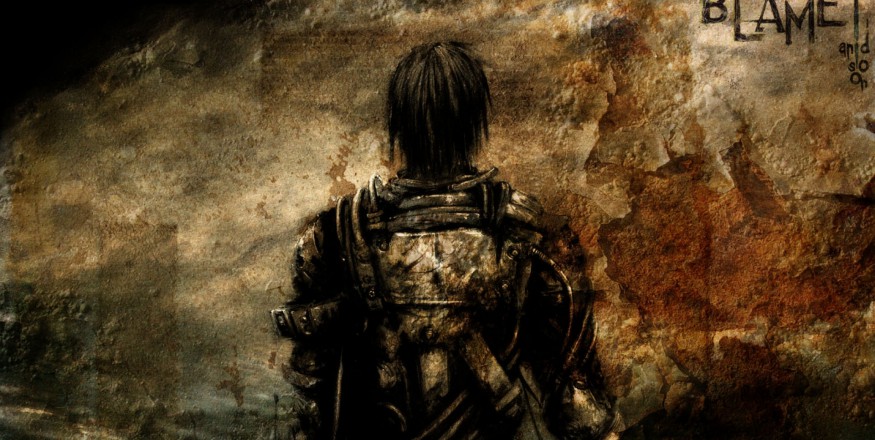The Lesser Key of Solomon, also known as Clavicula Salomonis Regis or Lemegeton, is an anonymous grimoire (or spell book) on demonology. It was compiled in the mid-17th century, mostly from materials a couple of centuries older. It is divided into five books—the Ars Goetia, Ars Theurgia-Goetia, Ars Paulina, Ars Almadel, and Ars Notoria.1147Please respect copyright.PENANAjfQDpYdVt2
Ars Goetia1147Please respect copyright.PENANAb0RRfA7UCy
The most obvious source for the Ars Goetia is Johann Weyer's Pseudomonarchia Daemonum in his De praestigiis daemonum. Weyer does not cite, and is unaware of, any other books in the Lemegeton, indicating that the Lemegeton was derived from his work, not the other way around. The order of the spirits was changed between the two, four additional spirits were added to the later work, and one spirit (Pruflas) was omitted. The omission of Pruflas, a mistake that also occurs in an edition of Pseudomonarchia Daemonum cited in Reginald Scot's The Discoverie of Witchcraft, indicates that the Ars Goetia could not have been compiled before 1570. Indeed, it appears that the Ars Goetia is more dependent upon Scot's translation of Weyer than Weyer's work in itself. Additionally, some material was used from Heinrich Cornelius Agrippa's Three Books of Occult Philosophy, the Heptameron by pseudo-Pietro d'Abano, and the Magical Calendar.
Weyer's Officium Spirituum, which is likely related to a 1583 manuscript titled The Office of Spirits, appears to have ultimately been an elaboration on a 15th-century manuscript titled Le Livre des Esperitz (of which 30 of its 47 spirits are nearly identical to spirits in the Ars Goetia).
In a slightly later copy made by Thomas Rudd, this portion was labelled "Liber Malorum Spirituum seu Goetia", and the seals and demons were paired with those of the 72 angels of the Shemhamphorasch, who were intended to protect the conjurer and control the demons he summoned. The angelic names and seals were derived from a manuscript by Blaise de Vigenère, whose papers were also used by Samuel Liddell MacGregor Mathers in his works for the Hermetic Order of the Golden Dawn. Rudd may have derived his copy of Liber Malorum Spirituum from a now-lost work by Johannes Trithemius, who taught Agrippa, who in turn taught Weyer.
This portion of the work was later translated by S. L. MacGregor Mathers and published by Aleister Crowley under the title The Book of the Goetia of Solomon the King. Crowley added some additional invocations previously unrelated to the original work, as well as essays describing the rituals as psychological exploration instead of demon summoning.1147Please respect copyright.PENANATBYSrUrRxw
The Seventy-Two Demons
The demons' names (given below) are taken from the Ars Goetia, which differs in terms of number and ranking from the Pseudomonarchia Daemonum of Weyer. As a result of multiple translations, there are multiple spellings for some of the names, which are given in the articles concerning them.
1) King Bael1147Please respect copyright.PENANAldhsPVqQKB
2) Duke Agares1147Please respect copyright.PENANAYHAjTaA3wd
3) Prince Vassago1147Please respect copyright.PENANAWu8v8njWl5
4) Marquis Samigina1147Please respect copyright.PENANA8ZRxWIjSiE
5) President Marbas1147Please respect copyright.PENANAzYjAyPubee
6) Duke Valefor1147Please respect copyright.PENANAcg0rbckZCd
7) Marquis Amon1147Please respect copyright.PENANAu0p58AxaCn
8) Duke Barbatos1147Please respect copyright.PENANAcLIEppjrlP
9) King Paimon1147Please respect copyright.PENANAKTDFsjYCga
10) President Buer1147Please respect copyright.PENANA2I1wVI45WE
11) Duke Gusion1147Please respect copyright.PENANA0Td0YEUgMU
12) Prince Sitri1147Please respect copyright.PENANAO8ScVK2cpZ
13) King Beleth1147Please respect copyright.PENANAIWxPQyY35i
14) Marquis Leraje1147Please respect copyright.PENANAJaWJ38PBvd
15) Duke Eligos1147Please respect copyright.PENANAHKmQNoZNJZ
16) Duke Zepar1147Please respect copyright.PENANAlxRlHWHDe5
17) Count/President Botis1147Please respect copyright.PENANAImLIgXsiNH
18) Duke Bathin1147Please respect copyright.PENANAvpuGrqtbXy
19) Duke Sallos1147Please respect copyright.PENANAPy5E9w0tBb
20) King Purson1147Please respect copyright.PENANA6Gs4g0Mt3j
21) Count/President Marax1147Please respect copyright.PENANAa0eu5BxdEe
22) Count/Prince Ipos1147Please respect copyright.PENANAiWWFKn6G4E
23) Duke Aim1147Please respect copyright.PENANAHqPNBn4eyS
24) Marquis Naberius1147Please respect copyright.PENANAGZNY9dq7Y9
25) Count/President Glasya-Labolas1147Please respect copyright.PENANABrILlir52E
26) Duke Buné1147Please respect copyright.PENANAqizKMMI3wL
27) Marquis/Count Ronové1147Please respect copyright.PENANActVtuslKC9
28) Duke Berith1147Please respect copyright.PENANA5QKgSIhl8f
29) Duke Astaroth1147Please respect copyright.PENANAkAjX3ZdF1d
30) Marquis Forneus1147Please respect copyright.PENANA0a0Zm459Gg
31) President Foras1147Please respect copyright.PENANArJTMmsJiwH
32) King Asmoday1147Please respect copyright.PENANAoEdkeIa1nZ
33) Prince/President Gäap1147Please respect copyright.PENANA35Pssf8c3K
34) Count Furfur1147Please respect copyright.PENANAB7GEnThHQE
35) Marquis Marchosias1147Please respect copyright.PENANAsXKV6cpj2q
36) Prince Stolas1147Please respect copyright.PENANAddBLyMQ0tf
37) Marquis Phenex1147Please respect copyright.PENANAGwuz3u0Qza
38) Count Halphas1147Please respect copyright.PENANAn6h1ZW3Rzo
39) President Malphas1147Please respect copyright.PENANAr7nUgoaiAL
40) Count Räum1147Please respect copyright.PENANASJLxGwnR4E
41) Duke Focalor1147Please respect copyright.PENANA6ppsCWRC5P
42) Duke Vepar1147Please respect copyright.PENANA0kV0Wm8UDC
43) Marquis Sabnock1147Please respect copyright.PENANAoDGCYCjmm1
44) Marquis Shax1147Please respect copyright.PENANAPBhBizr2Yk
45) King/Count Viné1147Please respect copyright.PENANAk9uobW6EBZ
46) Count Bifrons1147Please respect copyright.PENANAB7P5KsMovY
47) Duke Vual1147Please respect copyright.PENANArjQf0eQ8KQ
48) President Haagenti1147Please respect copyright.PENANAPo4mc23rw4
49) Duke Crocell1147Please respect copyright.PENANAPRz83ngMZW
50) Knight Furcas1147Please respect copyright.PENANA29046z8SFO
51) King Balam1147Please respect copyright.PENANAEqHFyWy3c9
52) Duke Alloces1147Please respect copyright.PENANAGo0h5kc7Db
53) President Caim1147Please respect copyright.PENANA8byioLB0Qf
54) Duke/Count Murmur1147Please respect copyright.PENANAUZwcQCdPTr
55) Prince Orobas1147Please respect copyright.PENANA0QMIL0WW5X
56) Duke Gremory1147Please respect copyright.PENANA1hitXhqW3G
57) President Ose1147Please respect copyright.PENANADdecuYvanw
58) President Amy1147Please respect copyright.PENANApMjVWCzEEO
59) Marquis Orias1147Please respect copyright.PENANAjp6pe7qTge
60) Duke Vapula1147Please respect copyright.PENANANSjqyzbRDU
61) King/President Zagan1147Please respect copyright.PENANAbf9zMmAGvg
62) President Valac1147Please respect copyright.PENANAoLrBoR49Ds
63) Marquis Andras1147Please respect copyright.PENANAawEQpQI20U
64) Duke Flauros1147Please respect copyright.PENANAjJh0hpF87H
65) Marquis Andrealphus1147Please respect copyright.PENANATUge3ztpF9
66) Marquis Kimaris1147Please respect copyright.PENANAMvGzObPcGV
67) Duke Amdusias1147Please respect copyright.PENANA99VqoWPoSW
68) King Belial1147Please respect copyright.PENANA0VHmWuiOz9
69) Marquis Decarabia1147Please respect copyright.PENANADjeT3gs4mK
70) Prince Seere1147Please respect copyright.PENANAnAgv4Q1Ewv
71) Duke Dantalion1147Please respect copyright.PENANAlhjOkb14DJ
72) Count Andromalius
The demons are described as being commanded by four kings of the cardinal directions: Amaymon (East), Corson (West), Ziminiar (North), and Gaap (South). A footnote in one variant edition instead lists them as Oriens or Uriens, Paymon or Paymonia, Ariton or Egyn, and Amaymon or Amaimon, alternatively known as Samael, Azazel, Azael, and Mahazael (purportedly their preferred rabbinic names).[10] Agrippa's Occult Philosophy lists the kings of the cardinal directions as Urieus (East), Amaymon (South), Paymon (West), and Egin (North); again providing the alternate names Samuel (i.e. Samael), Azazel, Azael, and Mahazuel. The Magical Calendar lists them as Bael, Moymon, Poymon, and Egin, though Peterson notes that some variant editions instead list '"Asmodel in the East, Amaymon in the South, Paymon in the West, and Aegym in the North"; "Oriens, Paymon, Egyn, and Amaymon"; or "Amodeo [sic] (king of the East), Paymon (king of the West), Egion (king of the North), and Maimon."1147Please respect copyright.PENANAYQlJIn2iBB
Ars Theurgia Goetia1147Please respect copyright.PENANAaTcbQozRDO
The Ars Theurgia Goetia mostly derives from Trithemius's Steganographia, though the seals and order for the spirits are different due to corrupted transmission via manuscript. Rituals not found in Steganographia were added, in some ways conflicting with similar rituals found in the Ars Goetia and Ars Paulina. Most of the spirits summoned are tied to points on a compass, four Emperors tied to the cardinal points (Carnesiel in the East, Amenadiel in the West, Demoriel in the North and Caspiel in the South), sixteen Dukes tied to cardinal points, inter-cardinal points, additional directions between those. There are an additional eleven Wandering Princes, totaling thirty one spirit leaders who each rule several to a few dozen spirits.1147Please respect copyright.PENANAOTZmybLbDi
1147Please respect copyright.PENANAvuOxFGni77
Ars Paulina1147Please respect copyright.PENANAAXIeHmOlfj
Derived from book two of Trithemius's Steganographia and from portions of the Heptameron, but purportedly delivered by Paul the Apostle instead of (as claimed by Trithemius) Raziel. Elements from The Magical Calendar, astrological seals by Robert Turner's 1656 translation of Paracelsus's Archidoxes of Magic, and repeated mentions of guns and the year 1641 indicate that this portion was written in the later half of the seventeenth century. Traditions of Paul communicating with heavenly powers are almost as old as Christianity itself, as seen in some interpretations of 2 Corinthians 12:2-4 and the apocryphal Apocalypse of Paul. The Ars Paulina is in turn divided into two books, the first detailing twenty-four angels aligned with the twenty-four hours of the day, the second (derived more from the Heptameron) detailing the 360 spirits of the degrees of the zodiac.1147Please respect copyright.PENANAoFgpHGTarr
Ars Almadel1147Please respect copyright.PENANA2zDncNracH
Mentioned by Trithemius and Weyer, the latter of whom claimed an Arabic origin for the work. A 15th-century copy is attested to by Robert Turner, and Hebrew copies were discovered in the 20th century. The Ars Almadel instructs the magician on how to create a wax tablet with specific designs intended to contact angels via scrying.1147Please respect copyright.PENANAShXRRKU3t7
Ars Notoria1147Please respect copyright.PENANAgVzaOg8Yr4
The oldest known portion of the Lemegeton, the Ars Notoria (or Notory Art) was first mentioned by Michael Scot in 1236 (and thus was written earlier). The Ars Notoria contains a series of prayers (related to those in The Sworn Book of Honorius) intended to grant eidetic memory and instantaneous learning to the magician. Some copies and editions of the Lemegeton omit this work entirely; A. E. Waite ignores it completely when describing the Lemegeton. It is also known as the Ars Nova.1147Please respect copyright.PENANAssLagPXlTQ
1147Please respect copyright.PENANAWI3ZkQ8cTC
It has also been said to be the origin of Pandora's box and where the seven deadly sins were born.
1 Gula (gluttony)1147Please respect copyright.PENANAP5isZsx7Gv
2 Luxuria (lust, fornication)1147Please respect copyright.PENANADrG7JCKWja
3 Avaritia (avarice/greed)1147Please respect copyright.PENANA7cFHR7a9ft
4 Superbia (pride, hubris)1147Please respect copyright.PENANAUAMSFcu9MN
5 Invidia (Envy)1147Please respect copyright.PENANAE5f7smTout
6 Ira (wrath)1147Please respect copyright.PENANANMDrR9csgm
7 Acedia (sloth)1147Please respect copyright.PENANA7pHwcNBQLn
If you look any further into it, beware your surrounding... You will uncover, the truth.
ns216.73.216.65da2





















